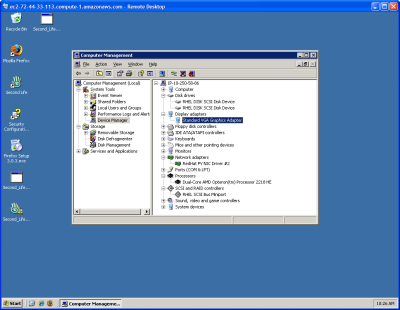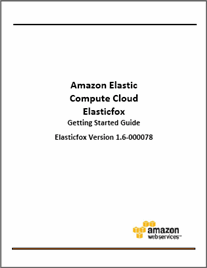AWS News Blog
Big Day for Amazon EC2: Production, SLA, Windows, and 4 New Capabilities
|
|
My colleagues and I have spent the week building up anticipation for this post on Twitter. After you read this post I am sure that you will agree that the wait was worthwhile.
The hallways at Amazon have been buzzing with excitement of late. After working for years to build and to run our line of highly scalable infrastructure web services we are happy to see that developers large and small are putting them to good use.
Here’s what’s happening today:
- Amazon EC2 is now in full production. The beta label is gone.
- There’s now an SLA (Service Level Agreement) for EC2.
- Microsoft Windows is now available in beta form on EC2.
- Microsoft SQL Server is now available in beta form on EC2.
- We plan to release an interactive AWS management console.
- We plan to release new load balancing, automatic scaling, and cloud monitoring services.
Let’s take a look at each of these items in turn.
Production – After a two year beta period, Amazon EC2 is now ready for production. During the beta we heard and responded to an incredible amount of customer feedback, adding support for powerful features such as Availability Zones, Elastic Block Storage, Elastic IP Addresses, multiple instance types, support for the OpenSolaris and Windows operating systems, and (as of today) a Service Level Agreement. Regular EC2 accounts are allowed to run up to 20 simultaneous instances. Requests for hundreds and even thousands of additional instances are granted all the time and can be made here.
SLA – The new EC2 Service Level Agreement works at the Region level. Each EC2 Region (there’s only one right now but there will be more in the future) is divided into a number of Availability Zones. The SLA specifies that each Region will be available at least 99.95% of the time. Per the SLA, a Region is unavailable if more than one of its Availability Zones does not have external connectivity.
 Windows Support – Beta level support for Microsoft Windows is now available on EC2, in the form of 32 and 64 bit AMIs, with pricing starting at $0.125 per hour. Microsoft SQL Server is also available in 64 bit form. All of the powerful EC2 features listed above can be used with the new Windows instances and we’ll be adding support for DevPay in the near future.
Windows Support – Beta level support for Microsoft Windows is now available on EC2, in the form of 32 and 64 bit AMIs, with pricing starting at $0.125 per hour. Microsoft SQL Server is also available in 64 bit form. All of the powerful EC2 features listed above can be used with the new Windows instances and we’ll be adding support for DevPay in the near future.
Once launched, the Windows instances can be accessed using the Windows Remote Desktop or the rdesktop client. I’ve spent some time using Windows on EC2 and it works really well. I used the EC2 command line tools to launch a 32 bit instance, opened up an additional port in the security group, and then logged in to it using Remote Desktop.
We’ll be running Windows on EC2 at next week’s PDC in Los Angeles, so be sure to stop by and to say hello if you are there. Rumor has it that we’ll be giving out a really cool badge to the people who stop by our booth.
RightScale founder Thorsten von Eiken has written up a helpful post which outlines the differences between Windows and Linux with respect to launching, accessing, bundling, and using the Elastic Block Store. He also describes current and planned support for Windows in their products.

We are looking forward to seeing how our customers will put Windows to work. We expect to see ASP.Net sites, media transcoding, HPC (High Performance Computing), and more. I’ve talked to a number of developers who will deploy hybrid web sites using a mix of Linux and Windows servers. This really underscores the open and flexible nature of EC2.
We are also planning to offer some new capabilities in 2009 to make managing cloud-based applications even easier. As usual, we’ll start with a private beta and you can express your interest here.
Management Console – The management console will simplify the process of configuring and operating your applications in the AWS cloud. You’ll be able to get a global picture of your cloud computing environment using a point-and-click web interface.
Load Balancing – The load balancing service will allow you to balance incoming requests and traffic across multiple EC2 instances.
Automatic Scaling – The auto-scaling service will allow you to grow and shrink your usage of EC2 capacity on demand based on application requirements.
Cloud Monitoring – The cloud monitoring service will provide real time, multi-dimensional monitoring of host resources across any number of EC2 instances, with the ability to aggregate operational metrics across instances, Availability Zones, and time slots.
Amazon CTO Werner Vogels has done a very nice job of explaining why services of this type are needed to build highly reliable and highly scalable applications. His blog is a must read for those interested in cloud computing. Werner has spent so much time talking about AWS of late that I’ve asked him to be an honorary member of my team of AWS evangelists!
I think it is important to note that load balancing, automatic scaling, and cloud monitoring will each be true web services, with complete APIs for provisioning, control, and status checking. We’ll be working with a number of management tool vendors and developers to make sure that their products will support these new services on a timely basis.
So, there you go. What do you think?
— Jeff;
